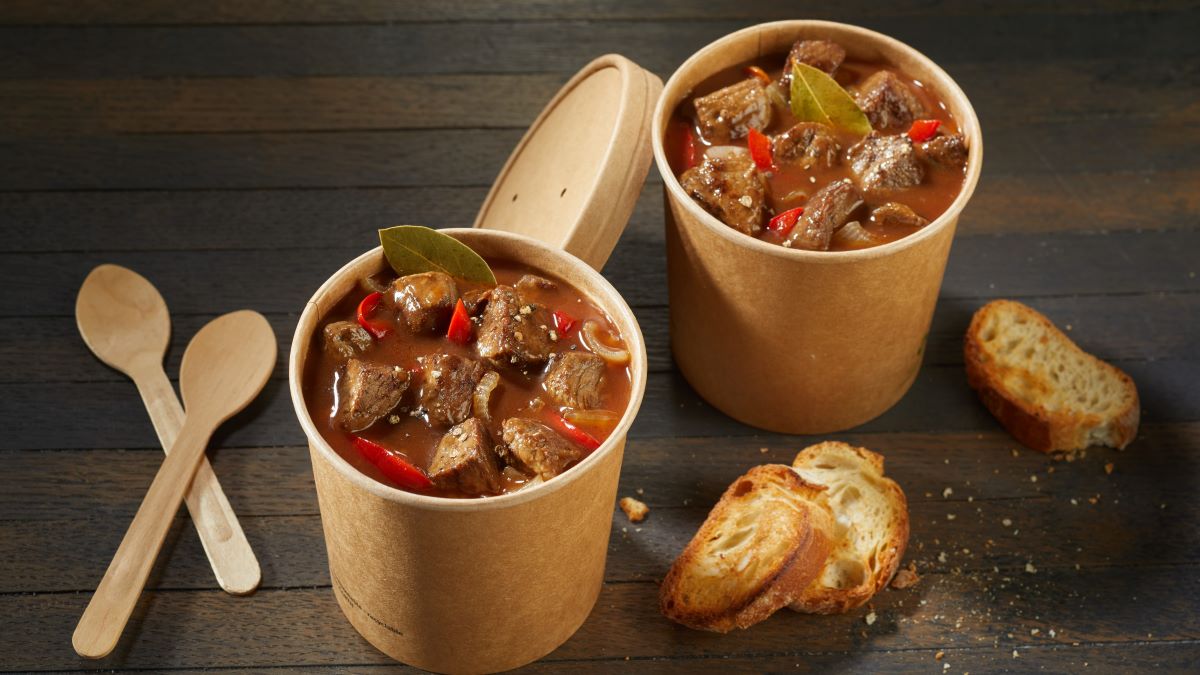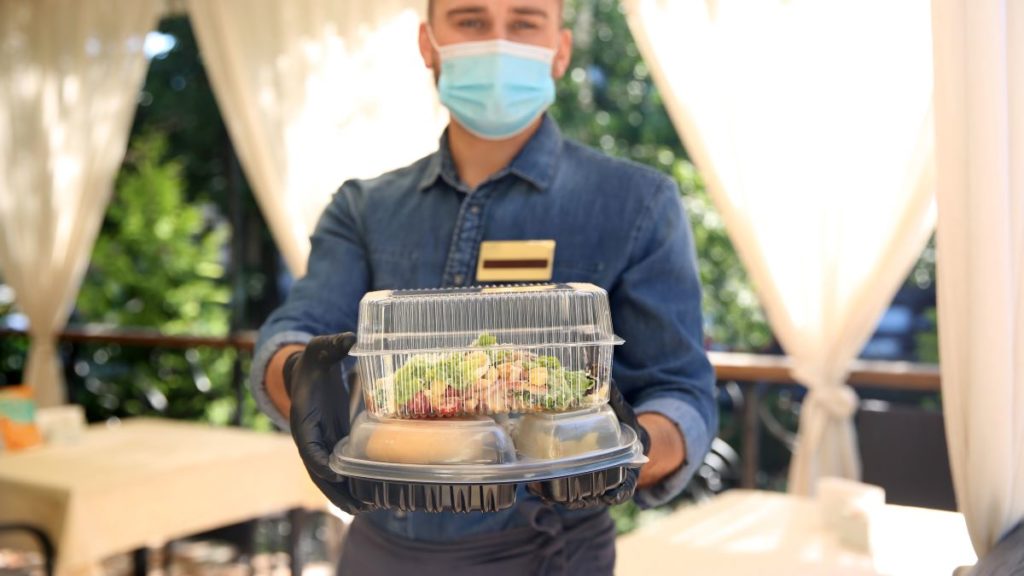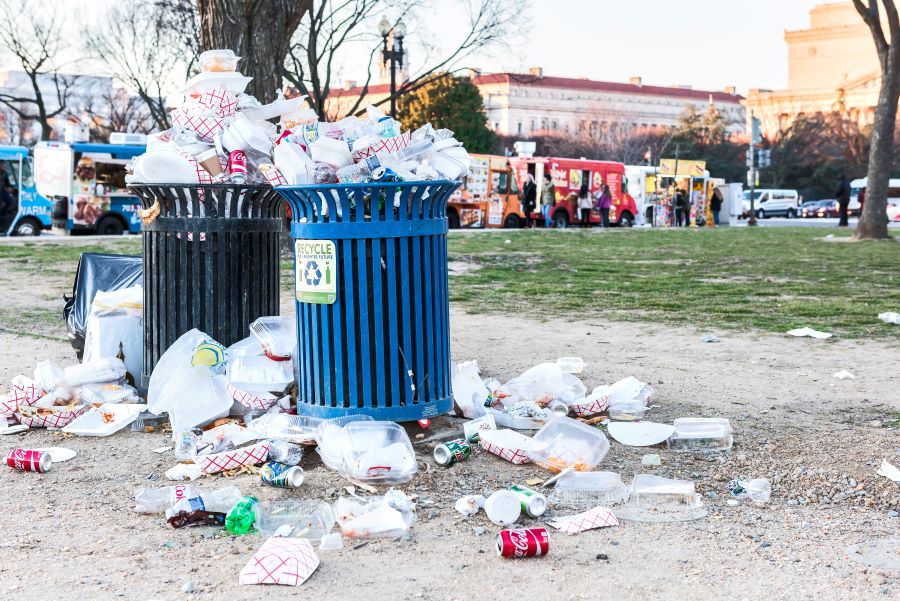Time for Restaurants to Shift to Sustainable Takeout Packaging

by Paul Kradin, Chief Sustainability Officer, JYBE
Customers are complaining loudly that takeout and food delivery packaging is unsustainable. Yet the transition to recyclable and biodegradable takeout packaging is not only imperative, but it’s also easier and more cost-effective than most restaurant companies think.
A large and growing number of diners repeatedly assert they would gladly pay more for meals if they knew it would support more sustainable practices. And yet, restaurants tend to stick to deeply rooted sourcing habits, accepting greenwashing by suppliers, and a pandemic-driven focus on hygienic-seeming plastic. Identifying and alleviating these obstacles has become JYBE’s business model as much as its mission — helping diners, chefs and restaurant owners discover an easier eco-friendly path.
Restaurants’ chronic reach toward plastic had already become a problem prior to COVID-19 and its subsequent impact. Delivery apps like Uber Eats, DoorDash, and others reported quarterly revenue increases of 100% during 2020, and most of those new sales were delivered using a flood of plastic containers. Although grassroots movements encouraged diners to decline cutlery sets, straws, or plastic beverage bottles given that most meals were eaten at home, that was a patchwork approach that didn’t get to the root of the problem — the industry’s overuse of harmful plastic and unsustainable takeout packaging.

Lack of Information
On the restaurant side, there was no central and credible information source to advise on truly sustainable materials, equivalent to what you find on a consumer products site that provides product environmental impact information, like Patagonia and EWG.org. Chefs and restaurant managers were at the mercy of a misleading marketing bombardment from retailers pushing bioplastics and non-recyclable petroleum products.
Somehow, the internet’s aptitude for eliminating market friction and increasing transparency had evaded the takeout business. By 2020, there was no way for diners to check in advance on restaurants’ takeout food packaging policy. Websites like Yelp — and eventually some of the delivery platforms —added an option to rate “packaging sustainability.” But with no clear definition of what they construed as sustainable, the results were as vague and varied as the users providing the reviews — and barely registered as footnotes to the food reviews.

The Crisis Is Here, the Answers, Too
Humanity will shortly surpass 400 million tons of plastic manufactured in a year. That’s about 100 pounds of plastic for each of the 8 billion people on Earth. Some will go for durable products like car bumpers or computer screens. But nearly half will be used to make single-use items that will barely be used for 30 minutes — and about 45% of that material goes to food packaging.
The materials in takeout packaging should not be harmful regardless of how they’re discarded. They should be recyclable, biodegradable, or backyard compostable (many compostables require a commercial composter). The materials should have a realistic chance of being properly processed no matter what jurisdiction they end up in.

Where a closed-loop reusables system is not possible, the following materials are the best options for restaurant takeout packaging:
- Paper and cardboard: Potentially recyclable in many cases and able to rapidly degrade in nature; little threat to wildlife if improperly discarded. Butcher and deli paper; kraft boxes, straws, cold cups, coffee cups, coffee lids (yep, thank you Naeco!), and paper bags.
- Glass: Infinitely recyclable, offers a redemption value if brought to a collection center in many states, little danger to wildlife if improperly discarded. Beverage bottles and jars.
- Aluminum: Infinitely recyclable with significant energy savings when reprocessed, superior to plastic in temperature retention, little risk to wildlife except in certain marine environments. Beverage cans and bottles, round and rectangular aluminum pans with foil board lids, foil sheets, and foil pouches.
- Birch: One of the fastest-growing and hearty trees — can reach maturity in 20 years in most areas of the country; compostable. Cutlery sets.
- Bamboo: Hearty and fast-growing, bamboo can regenerate several times per year from the same root system. Once its growth cycle starts it can mature in just a few months; compostable. Cutlery sets and napkins.
A Crowdsourced Solution for Transparency
We created the JYBE app to connect diners to restaurants that use Earth-friendly takeout packaging. It relies on its users to photograph and describe the packaging materials they receive in to-go and delivery orders so we can assign a rating of 1 through 4 (4 being best) to highlight the local restaurants with the best practices. Uploading a photo of your order and answering a few verifiable questions through our app allows us to know how much plastic, bioplastic, and Styrofoam were supplied, and if you received non-requested cutlery. On the flip side, we ask our users to check JYBE scores before choosing a restaurant.

Our results to date show clearly that sustainable materials are not more expensive and less performant than unrecyclable or uncompostable alternatives. In repeated cases, we can consistently show restaurants viable alternatives for each product they normally use. There’s one exception — namely, those pesky 1-oz. to 2-oz. ramekins used for sauces and dips. For everything else, there’s an easy swap to match the dimensions, performance, and price of what they are used to.
A Sustainable Shift for Restaurants
Restaurants need to embrace this cultural shift and work to capitalize on their mastery of more sustainable practices; sustainable packaging is becoming a must-have item for consumers. While changing yet another pillar of their takeout business does not appeal to most chefs and owners, the situation with plastic is undeniably dire.
If I was trying to grow my restaurant’s business, I would be angling for customers in eco-affinity groups who are energetic, social media-savvy, and hungry three times a day. And I’d be showing them how the takeout and delivery packaging my restaurant uses supports the environment.
About the Author
Paul Kradin is co-founder and chief sustainability officer of JYBE,
an LA-based startup finding innovative solutions to the restaurant
industry’s single-use plastic crisis. He ensures every aspect of the
company honors JYBE’s sustainability values and works with partners to
educate and help them transition to more Earth-friendly practices. Read
more about Kradin at gojybe.com/team.
We all agree that takeways contribute to a lot of rubbish in the streets, cardboard containers are always best but over the years plastic has taken over and we are all paying the price for it. At least there are people out there who are attempting to reduce this amount of waste! One of the other type of plastic containers are those in the supermarkets for those speciality salads,they say on the container that they are recyclable, maybe they are but are they really necessary? All of those prepared meals are the same, where does it end? In Lidl they have a few prepared meals not in plastic and they are great, but as of yesterday there were only three of them, a vegetable lasagne, normal lasagne and canellonis. Its a start but compared to the others a mere drop in the ocean, but something is better than nothing.
The war against plastic continues, but without everyone doing their part, it will be very slow going and difficult.
The blog song for today is: " Tiger Feet" by MUD
TTFN




No comments:
Post a Comment